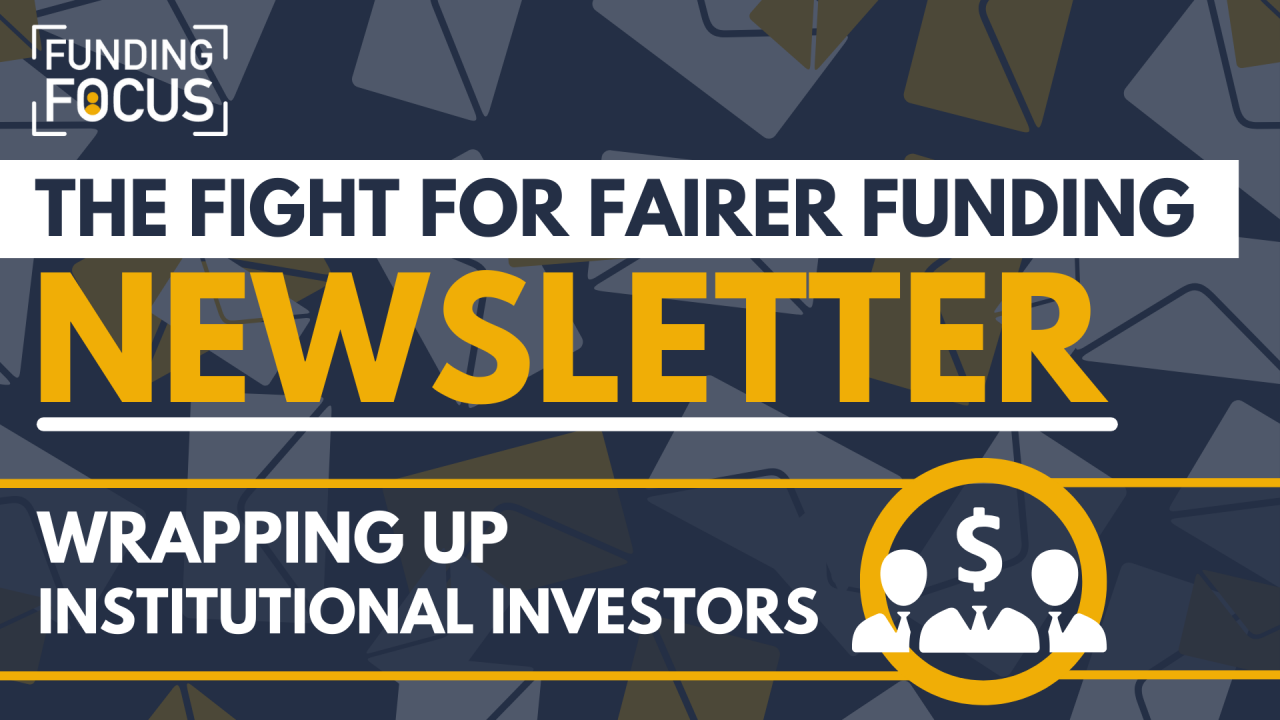Wrapping up institutional investors

30 November 2022 | Newsletter
Welcome to The Fight for Fairer Funding newsletter where we share the latest in the fight for fairer funding in investment, raise awareness and provide education in line with our Mission. This newsletter from Funding Focus founder, David B. Horne, is part of the platform that sheds light on the uneven playing field that female and under-represented entrepreneurs of all genders face when it comes to raising capital for their businesses. We hope you enjoy it!
Read our latest edition below.
This week we wrap up on institutional investors with Family Offices.
The final area of institutional investors covers family offices and wealth management firms. Like the archetypal Swiss private banker, these are specialist investment firms that look after the portfolios of high and ultra-high net-worth people, and they are tasked with preserving and growing capital so it can pass from one generation to the next.
In many ways, these investment firms operate much like VC and PE firms. There are typically professional fund-management staff at the face of the firm and it is their job to look after their clients’ money. Where these firms can differ — and this is especially true with family offices — is if you are able to connect with members of the family, who tend to be entrepreneurial. Then the discussion can often be more like when you are working with an angel investor. They get the thrill and the buzz of creating a new business and scaling it up in a way the professional investors have been trained not to react to.
It is often difficult to gain access to the family members, but if you do manage to do so, you can adapt your approach accordingly as typically you’ll be dealing with another entrepreneur.
Structures in institutional deals — a high level overview
In most cases, when you are raising equity capital, you’ll do it by issuing common or ordinary shares in the company; the terms may differ based on where you are, but these are the normal shares which give the owner a stake in the business. When you raise money through crowdfunding, angel investors and public markets, you’ll typically be issuing ordinary shares. When you’re raising from VC or PE firms, in the majority of cases, they will add in funding through debt or preference shares.
Let’s use an example to illustrate this. Let’s say you’re doing a $10 million raise to scale the company or acquire a competitor. In cases like this, you will often form a new company as the fundraising vehicle. The company will issue a small amount of ordinary shares to you, your team and the PE house. Let’s say the split is 55% to you, 5% to your team and 40% to the PE house. The shares will be issued for, say, $1, so on day one, there is $100 of share capital.
Next, the company will issue preference shares to the PE house. These shares might or might not have voting rights, but what they will have is a guaranteed ‘dividend’ which accrues to the holders of the preference shares. Let’s say the company issues $10 million of preference shares and they include a cumulative ‘dividend’ of 10% per annum. This means every year, the holders of these shares accrue $1 million worth of ‘dividend’.
Institutional deals represent the next level up in raising funding for your business. This is where the amounts get serious, and the complexity of the deal structure and documentation of the agreements increases significantly.
That’s a wrap on our Institutional Investors series. If you’ve missed the Venture Capital and Private Equity newsletters, you can find them here:
Do you have any questions related to institutional investors? Let me know in the comments below!
Until next time…
With love and gratitude,
David
We hope you enjoyed this newsletter edition! Subscribe to get notified of our next edition.
You may also enjoy our Hear Your Money Myths series where we answer your everyday money questions in under a minute!